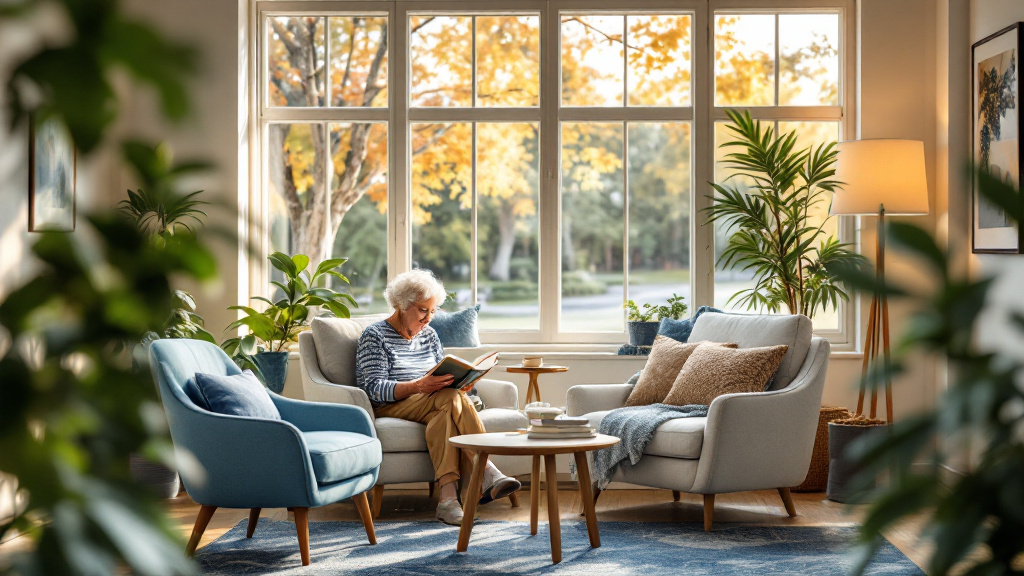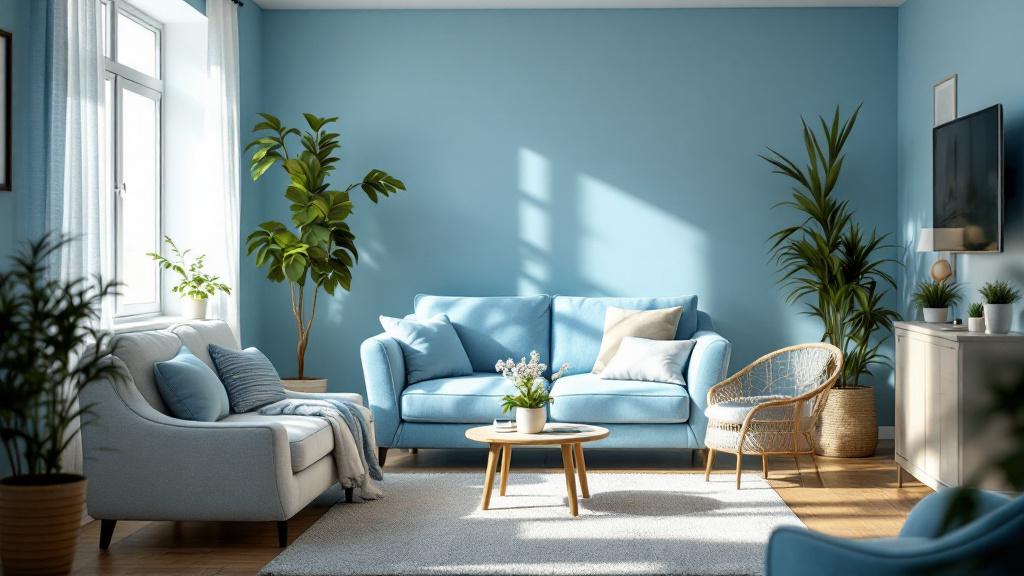
Mastering Air Circulation for Seniors
March 4, 2025
Master air circulation for seniors to boost indoor air quality and improve comfort in any living space.

Understanding Air Circulation
Importance of Proper Air Circulation
Proper air circulation is essential for creating a healthy and comfortable environment. It ensures that fresh air continuously moves throughout a space, preventing stagnation and maintaining good indoor air quality [1]. Insufficient airflow can lead to discomfort, uneven temperatures, and stagnant air pockets within indoor spaces, which can affect overall well-being.
Here are several key reasons why proper air circulation is important:
Benefits of Proper Air CirculationDescriptionImproved Indoor Air QualityConstant air movement helps to dilute and disperse indoor pollutants, reducing their concentration and potential harm.Enhanced ComfortProper circulation helps maintain even temperatures, preventing hot or cold spots in the home.Moisture ControlGood airflow helps manage humidity, which can prevent mold growth and maintain a comfortable humidity level.Health BenefitsBetter air quality contributes to respiratory health and can decrease allergies and asthma symptoms.
Optimizing air circulation plays a crucial role in contributing to a healthier and more enjoyable indoor environment, enhancing aspects such as temperature regulation, moisture control, and overall comfort [1].
Factors Affecting Air Cleaner Effectiveness
The effectiveness of air cleaners is significantly influenced by several factors related to air circulation. These factors include:
By considering these factors, individuals can ensure that their air cleaners work efficiently, contributing to better air circulation and overall air quality in the home. For more information on how air quality affects health, check out our resource on do air purifiers help with dust.
Benefits of Optimizing Air Circulation
Optimizing air circulation in a space offers significant advantages that contribute to the overall well-being of its occupants. It not only enhances indoor air quality but also plays a vital role in regulating temperature, ultimately leading to a more comfortable environment.
Enhancing Indoor Air Quality
Proper air movement is essential for maintaining good indoor air quality. Fresh air needs to circulate throughout a space to prevent stagnation, allowing for the dilution and dispersal of indoor pollutants, allergens, and pathogens. Insufficient airflow can contribute to discomfort and health issues, especially for sensitive populations, including seniors. Well-maintained HVAC systems can help improve the quality of indoor air by removing harmful substances and ensuring a constant flow of fresh air [2].
Pollutant TypeImpact on Indoor Air QualityDust and AllergensCan trigger allergies and asthmaVOCsContribute to headaches and nauseaBiological ContaminantsCan lead to respiratory infections
Proper air circulation significantly mitigates these pollutants, promoting a healthier living environment, particularly for the elderly who may be more vulnerable.
Improving Temperature Regulation
Optimizing air circulation contributes to better temperature regulation within an indoor space. When air is allowed to flow freely, it helps to balance temperatures, preventing pockets of stale, hot, or cold air. This is particularly important for creating a comfortable living environment in homes where seniors reside, as they may be more susceptible to temperature fluctuations and related health risks.
Effective air circulation ensures that thermostat readings accurately reflect the overall temperature in a room, which can lead to more efficient heating and cooling. Poor airflow can lead to discomfort and increased energy costs due to the HVAC system working harder to maintain desired temperatures.
Temperature Regulation BenefitsDescriptionEven Temperature DistributionMinimizes hot and cold spotsEnergy EfficiencyLowers energy consumptionComfort LevelIncreases overall occupant comfort
By maintaining proper airflow, homes can achieve a desirable climate that benefits all residents. For additional strategies to improve air circulation and overall living conditions, consider exploring multi-generational housing or adult foster homes as alternatives to traditional living environments.
Strategies for Improving Airflow
Enhancing air circulation within a space is essential for comfort and overall health. Here are some effective strategies for improving airflow.
Open Windows and Doors
Keeping windows and doors open is one of the simplest and most effective methods for improving air circulation. This approach allows fresh air to enter and stale air to exit, promoting a healthier indoor environment. Understanding the climate and outdoor conditions is crucial when implementing this strategy. In warmer months, opening windows can create cross-ventilation, significantly improving airflow.
In addition, the arrangement of furniture can impact how air flows through a room. Ensuring that furniture does not obstruct windows or vents will help maintain unobstructed pathways for air movement. The benefits of keeping windows and doors open also include reducing the reliance on HVAC systems, which can lower energy costs.
Effective Use of Fans and Ventilation Systems
Strategically using fans and ventilation systems can greatly enhance air circulation. Ceiling fans, oscillating fans, and exhaust fans all contribute to better airflow. Ceiling fans, for example, can be set to turn counter-clockwise during the summer to push cool air down and clockwise in winter to circulate warm air.
Using exhaust fans in kitchens and bathrooms helps remove humidity and odors, contributing to better air quality. Centrally located ventilation systems should be maintained properly to function efficiently. Ensuring that filters are clean and up to date is essential for maintaining airflow and indoor air quality.
Type of FanBest UseCeiling FansCirculating air throughout the roomTable FansDirect airflow to specific areasExhaust FansRemoving humidity and odors from specific rooms
In combination, these strategies can significantly improve air movement within a home, enhancing comfort and overall health. For more information on maintaining proper airflow, refer to care coordination strategies or learn about the effects of poor air circulation in our resource on multi-generational housing.
Maintaining Proper Air Circulation
To ensure adequate airflow and enhance indoor air quality, maintaining proper air circulation is essential. This involves regular cleaning and dusting practices and managing humidity levels along with the effective use of air filters.
Cleaning and Dusting Practices
Regular cleaning and dusting play a crucial role in maintaining healthy air circulation. Dust and other pollutants can accumulate in living spaces, obstructing airflow and reducing air quality. Here are some best practices to keep in mind:
Humidity Control and Air Filters
Managing indoor humidity levels and using effective air filters are vital in ensuring optimal air circulation. Here are some strategies:
Filter TypeEfficiency Rate (%)Airflow Rate (CFM)HEPA Filter99.97200Standard Filter40-60300Activated Carbon Filter80-90250
In summary, proper air circulation involves regular cleaning, effective humidity control, and appropriate use of air filters. These practices can significantly enhance air quality and ensure a healthier indoor environment. For further insights on enhancing indoor air quality, refer to our articles on what is a care manager and end of life planning.
Advancements in Air Filtration Technologies
As awareness of the significance of air quality grows, so do the innovations in air filtration technologies. These advancements primarily focus on two approaches: structure-based methods and interaction-based methods.
Structure-Based Approaches
Structure-based strategies are centered around the physical design of air filters. These methods improve the efficiency of air cleaning by optimizing the filter's structure. For example, filters with a denser network of fibers can capture smaller particles, including allergens and pollutants.
Structure-based filters often include features like:
The effectiveness of structure-based filters can be measured using several performance metrics. Here is a summary of common filter types and their efficiency ratings.
Filter TypeParticle Size CapturedEfficiency RatingHEPA0.3 microns99.97%Activated CarbonVOCs and odorsVariesElectrostatic ScreenDust, allergensVaries
These advancements are crucial for enhancing overall air circulation and ensuring cleaner indoor environments for residents, particularly seniors.
Interaction-Based Methods
Interaction-based methods focus on the chemical and physical interactions within the air filtration system. These approaches often utilize materials that enhance the filtration process through specific reactions with the contaminants in the air. For instance:
Recent research emphasizes the importance of these interaction-based methodologies in modern air purifiers [4]. The combination of structure-based and interaction-based strategies leads to a comprehensive solution for air filtration.
With continuous advancements in air filtration technologies, optimizing air circulation can greatly improve indoor air quality and enhance living conditions for seniors and other vulnerable populations. This evolution highlights the importance of effective air management in residential settings and facilities.
Ventilation for Disease Control
Reducing Disease Transmission
Proper ventilation plays a crucial role in reducing the transmission of airborne diseases. Effective air circulation lowers the concentration of infectious aerosols in indoor environments, which can significantly diminish the risk of spreading viruses. It is important to note that while ventilation interventions are effective, they cannot completely eliminate the risk of exposure to infectious agents [5]. By ensuring that spaces are well-ventilated, individuals can decrease their chances of coming into contact with harmful pathogens.
In high-density living environments, adequate airflow is essential. Increasing the air changes per hour (ACH) can help minimize the presence of germs in the air. For an effective strategy, aim for at least 5 or more ACH of clean air. Although achieving this rate significantly reduces exposure to airborne contaminants, it does not guarantee that any space will be completely free from risk.
Air Changes per Hour (ACH)Risk Level Reduction0 - 2Low3 - 4Moderate5 or moreHigh
Recommended Ventilation Rates
To promote a safer indoor environment, the Centers for Disease Control and Prevention (CDC) recommends aiming for at least 5 air changes per hour (ACH). This rate can be obtained through various ventilation strategies, which may include opening windows, using exhaust fans, or employing mechanical ventilation systems.
For improved efficiency, it is advisable to use air filters with a Minimum Efficiency Reporting Value (MERV) of 13 or better. Such filters can significantly reduce the levels of viral particles, including those associated with respiratory illnesses, making them a vital component in disease prevention strategies [5].
Additionally, High-efficiency Particulate Air (HEPA) filters are recommended for indoor spaces, particularly those at higher risk of disease transmission. HEPA filters excel in filtering out infectious particles, proving more effective than MERV 16 filters. Strategies like upper-room Ultraviolet Germicidal Irradiation (UVGI) can also serve as an additional layer of protection in areas with large gatherings where disease transmission is likely [5].
Optimizing airflow through appropriate ventilation practices not only enhances indoor air quality but also provides a vital defense against disease, especially for seniors and vulnerable populations. For more information, consider exploring topics such as care coordination and palliative and hospice care that emphasize health and safety for seniors.
References
[2]:
[3]:
[4]:
[5]:



































































































